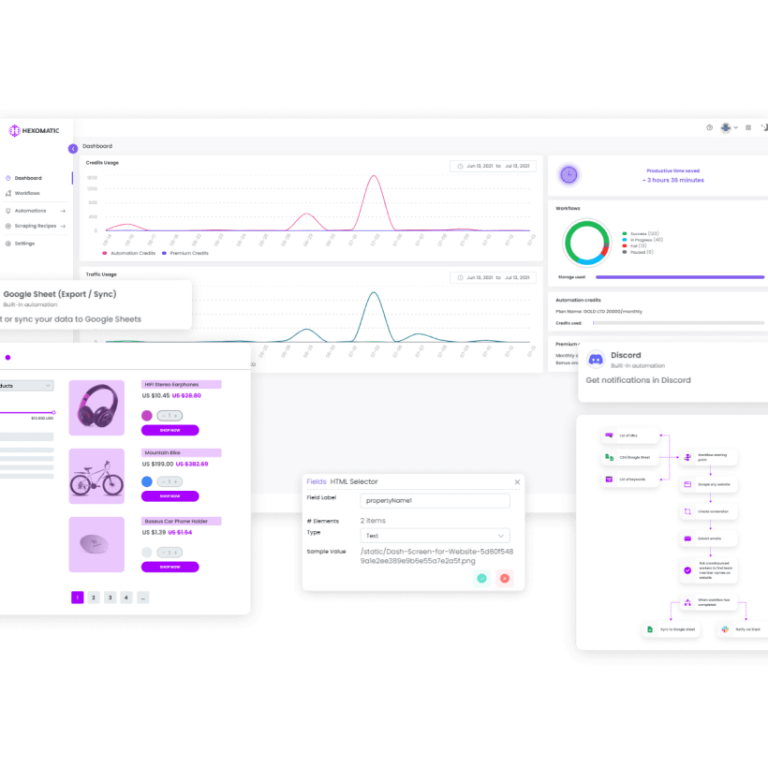
Introduction: Leverage AI Analytics
Artificial Intelligence (AI) is no longer just a buzzword reserved for tech giants. Today, AI analytics is transforming the way small businesses operate, offering powerful insights that drive growth, efficiency, and profitability. In this article, we’ll explore how small business owners can leverage AI analytics to enhance their performance. We’ll cover setting goals, collecting and analyzing data, making data-driven decisions, and continuously improving your AI analytics strategy. Let’s dive in!
Setting Goals for AI Analytics
Before you can harness the power of AI analytics, it’s crucial to set clear and actionable goals. Here’s how you can get started:
- Identify Key Performance Indicators (KPIs)
- KPIs are the metrics that matter most to your business. These could include sales revenue, customer acquisition costs, website traffic, or social media engagement. The right KPIs will vary depending on your business objectives.
- Example: If you run an e-commerce store, important KPIs might include conversion rate, average order value, and customer lifetime value.
- Set Realistic and Measurable Goals
- Your goals should be SMART: Specific, Measurable, Achievable, Relevant, and Time-bound.
- Example: Instead of saying, “I want to increase sales,” a SMART goal would be, “I want to increase sales by 20% over the next six months.”
- Align Goals with Business Strategy
- Ensure that your analytics goals support your overall business strategy. This alignment helps in prioritizing efforts and resources effectively.
- Example: If your business strategy is to expand into new markets, your analytics goals might focus on understanding market trends and customer preferences in those regions.
Collecting and Analyzing Data
Once your goals are set, the next step is to collect and analyze the relevant data. Here’s how:
- Collecting Data
- Gather data from various sources such as sales transactions, customer interactions, social media, and marketing campaigns. The more data you have, the more comprehensive your analysis will be.
- Tools: Use AI analytics tools like Google Analytics, Zoho Analytics, or Tableau to automate data collection.
- Ensuring Data Quality
- Clean and accurate data is essential for reliable insights. Regularly review your data to remove duplicates, correct errors, and fill in missing values.
- Tip: Implement data validation checks to maintain data quality.
- Analyzing Data
- Use your AI analytics tool to analyze the collected data. Look for patterns, trends, and anomalies that can provide insights into your business performance.
- Example: Analyze sales data to identify your best-selling products and peak sales periods.
- Visualizing Data
- Data visualization tools can help you interpret the data more easily. Create charts, graphs, and dashboards to present your findings in a clear and actionable format.
- Tools: Tableau, Power BI, and Google Data Studio are excellent for data visualization.
Making Data-Driven Decisions
With your data analyzed, it’s time to turn insights into action. Here’s how to make data-driven decisions that boost your business performance:
- Understand Your Insights
- Take the time to thoroughly understand the insights generated by your AI analytics tool. This involves looking beyond the numbers to identify the underlying causes and potential implications.
- Example: If your AI tool indicates a drop in website traffic, investigate further to understand whether it’s due to SEO issues, technical problems, or seasonal trends.
- Develop Actionable Strategies
- Use the insights to develop strategies that address identified issues or opportunities. Make sure these strategies are actionable and aligned with your business goals.
- Example: If your analysis shows that email marketing has a high conversion rate, you might decide to increase investment in email campaigns and personalize content based on customer behavior.
- Test and Iterate
- Implement your strategies on a small scale first to test their effectiveness. Use A/B testing to compare different approaches and identify the most effective one.
- Tip: Continuously monitor the results and be ready to iterate based on the feedback.
- Measure Impact
- Track the impact of your data-driven decisions by measuring the relevant KPIs. This will help you understand the effectiveness of your strategies and make necessary adjustments.
- Example: If your goal was to increase sales by 20%, measure your sales performance regularly to see if you’re on track to meet that goal.
Continuous Improvement
AI analytics is not a one-time effort. To fully leverage its power, you need to continuously improve your analytics processes and stay updated with the latest trends and technologies. Here’s how:
- Monitor and Refine Your Analytics Processes
- Regularly review your analytics processes to identify areas for improvement. This might involve updating your data collection methods, refining your KPIs, or exploring new analytics tools.
- Tip: Schedule regular reviews (e.g., quarterly) to ensure your analytics processes remain effective and aligned with your business goals.
- Stay Updated with AI Trends
- The field of AI analytics is constantly evolving. Stay informed about the latest trends, technologies, and best practices to ensure you’re leveraging the most advanced capabilities.
- Resources: Follow industry blogs, attend webinars, and participate in online communities to keep up with the latest developments.
- Invest in Training and Development
- Equip your team with the necessary skills to effectively use AI analytics tools. This might involve formal training programs, workshops, or online courses.
- Example: Consider offering training sessions on data analysis, machine learning, and data visualization to enhance your team’s expertise.
- Seek Expert Advice When Needed
- Don’t hesitate to seek advice from experts if you’re facing challenges with AI analytics. Consultants and industry experts can provide valuable insights and guidance tailored to your business needs.
- Tip: Join professional networks and forums to connect with AI analytics experts and peers.
Conclusion
Leveraging AI analytics can significantly boost your small business performance by providing actionable insights, improving decision-making, and driving efficiency. By setting clear goals, collecting and analyzing data, making data-driven decisions, and continuously improving your analytics processes, you can unlock the full potential of AI analytics.
In this article, we’ve explored how to effectively leverage AI analytics for your small business. By following these steps, you’ll be well on your way to making smarter, data-driven decisions that propel your business forward. Remember, the journey to harnessing AI analytics is ongoing, and continuous improvement is key to staying ahead in today’s competitive market.
Stay tuned for more insights and practical tips on leveraging AI for small businesses. And don’t forget to share your experiences and successes with us!







One Comment
Comments are closed.